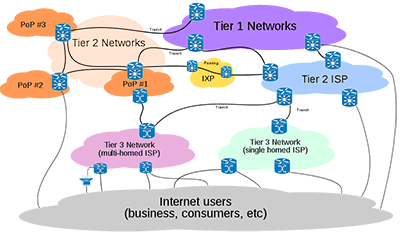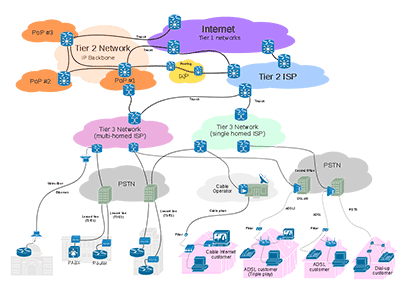Internet structure
The Internet can be described according to the following structure:
- Network edge: formed by hosts and servers
- Access networks: wired and wireless communication links provide access to the Internet
- Network core: a mesh of interconnected routers which switch packets and interconnect access networks and network edge
Internet uses Packet-switching to send data:
- Hosts break application-layer messages into packets
- Forward packets from one router to the next, across links on path from source to destination
At center (network core): small number of well-connected large networks
- “tier-1” commercial ISPs (e.g., Level 3, Sprint, AT&T, NTT), national & international coverage
- Content provider network (e.g., Google): private network that connects its data centers to Internet, often bypassing tier-1, regional ISPs
- Internet Exchange Points (IXP) which interconnect Tiers
- Points of Presence (PoP) where Tiers’ clients interconnect
Figure 1 Structure of the Internet Core Network
Click to enlarge
View on tier 1 and 2 ISP interconnections by Ludovic.ferre from Wikipedia CC BY-SA 3.0
Users connect to Internet through access networks: Public Switched Telephone network, Cable Operator, ADSL …
Figure 2 Different Access Networks connect to Internet Service Providers
Click to enlarge
Diagram showing how customers connect to ISP's... by Ludovic.ferre from Wikipedia CC BY-SA 3.0







